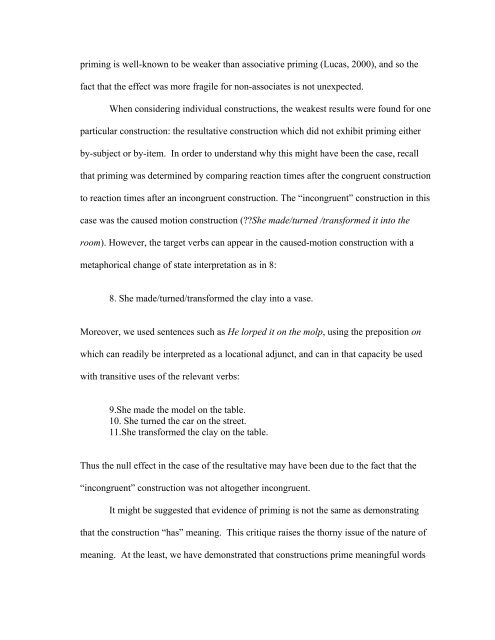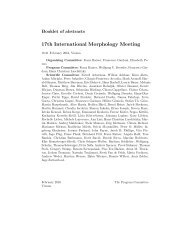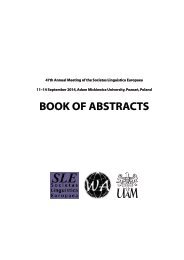Jabberwocky priming
Jabberwocky priming
Jabberwocky priming
Create successful ePaper yourself
Turn your PDF publications into a flip-book with our unique Google optimized e-Paper software.
<strong>priming</strong> is well-known to be weaker than associative <strong>priming</strong> (Lucas, 2000), and so thefact that the effect was more fragile for non-associates is not unexpected.When considering individual constructions, the weakest results were found for oneparticular construction: the resultative construction which did not exhibit <strong>priming</strong> eitherby-subject or by-item. In order to understand why this might have been the case, recallthat <strong>priming</strong> was determined by comparing reaction times after the congruent constructionto reaction times after an incongruent construction. The “incongruent” construction in thiscase was the caused motion construction (??She made/turned /transformed it into theroom). However, the target verbs can appear in the caused-motion construction with ametaphorical change of state interpretation as in 8:8. She made/turned/transformed the clay into a vase.Moreover, we used sentences such as He lorped it on the molp, using the preposition onwhich can readily be interpreted as a locational adjunct, and can in that capacity be usedwith transitive uses of the relevant verbs:9.She made the model on the table.10. She turned the car on the street.11.She transformed the clay on the table.Thus the null effect in the case of the resultative may have been due to the fact that the“incongruent” construction was not altogether incongruent.It might be suggested that evidence of <strong>priming</strong> is not the same as demonstratingthat the construction “has” meaning. This critique raises the thorny issue of the nature ofmeaning. At the least, we have demonstrated that constructions prime meaningful words







